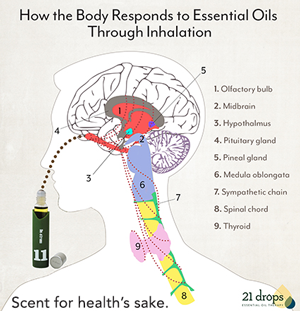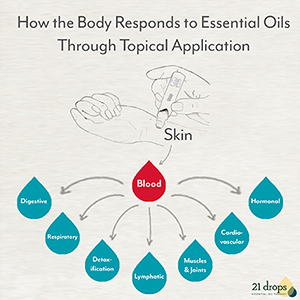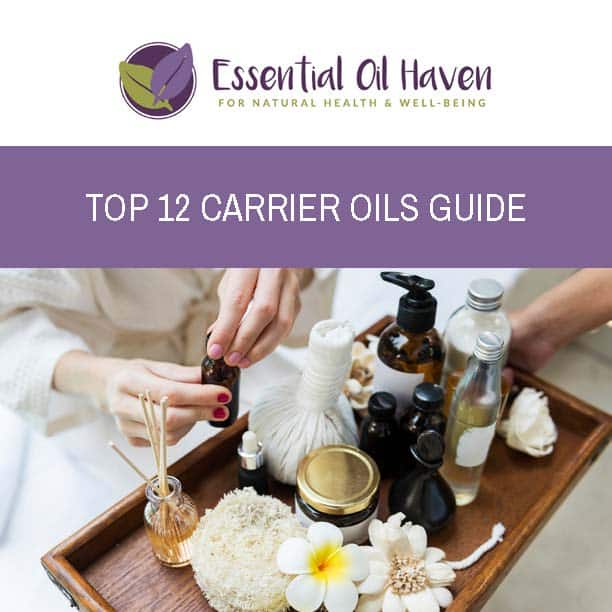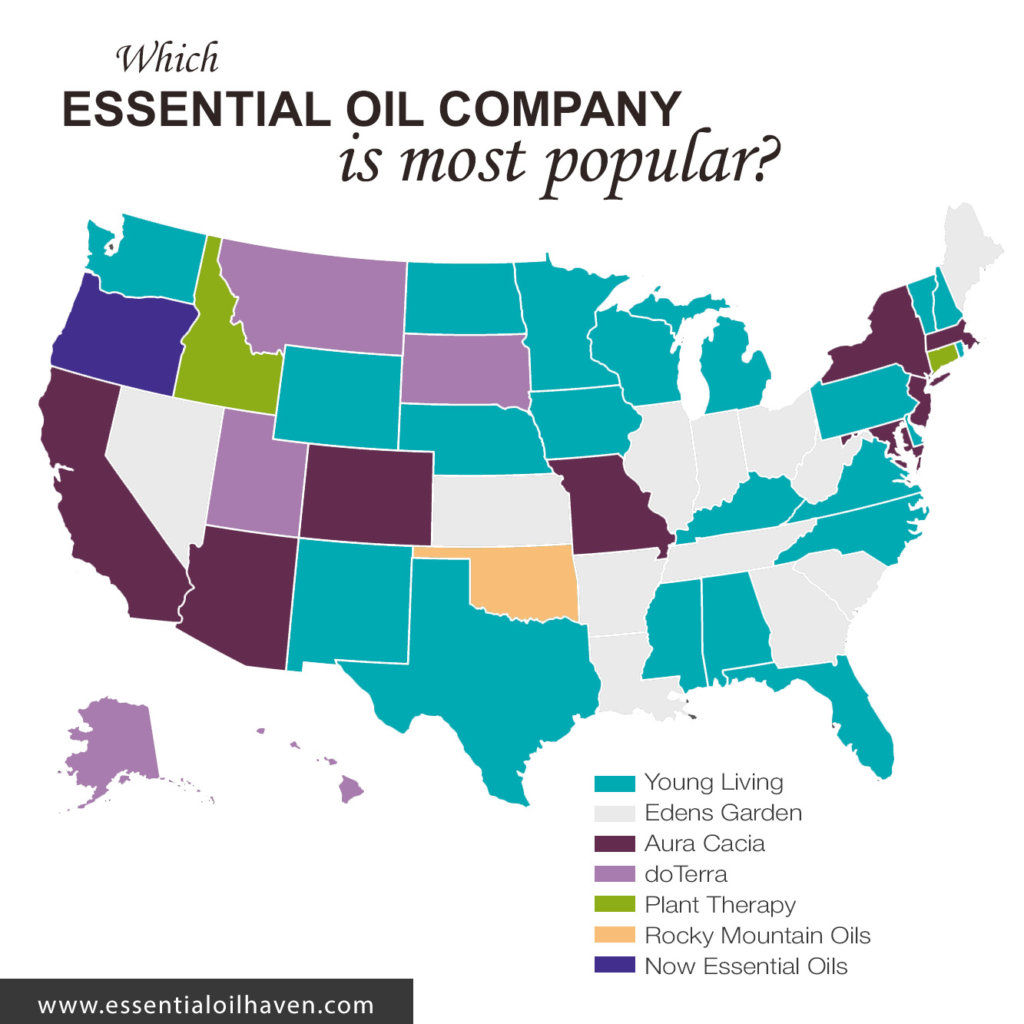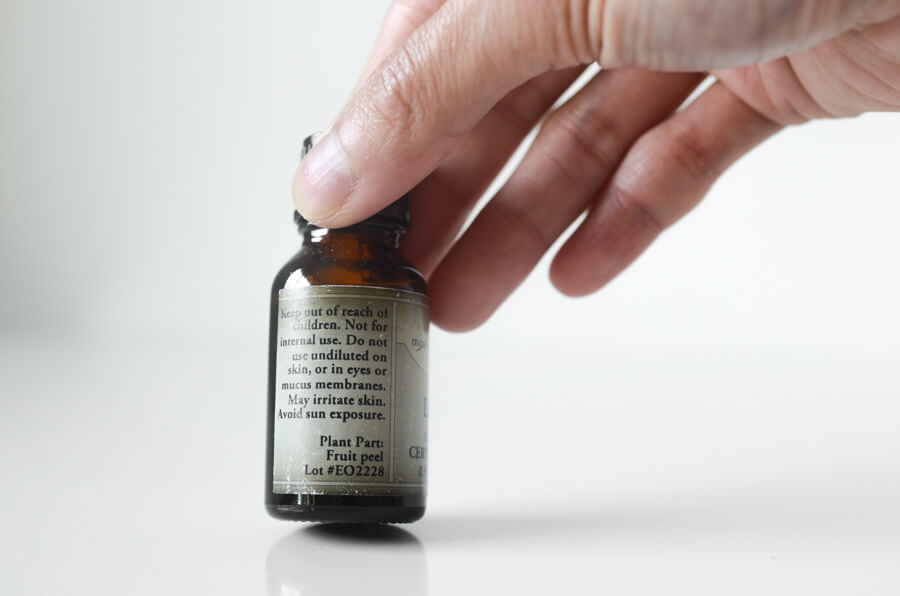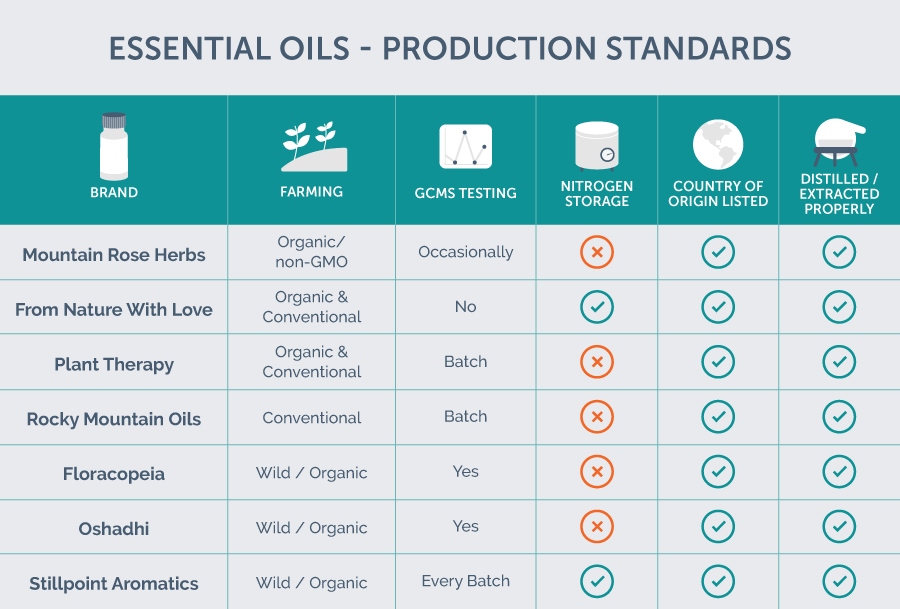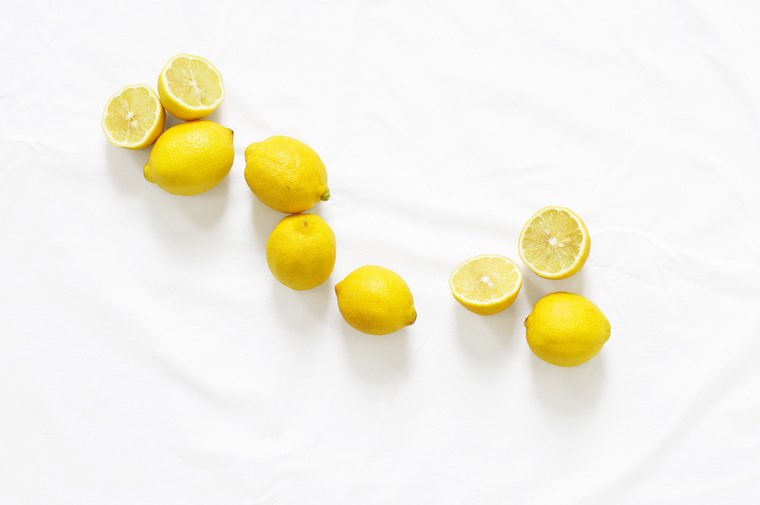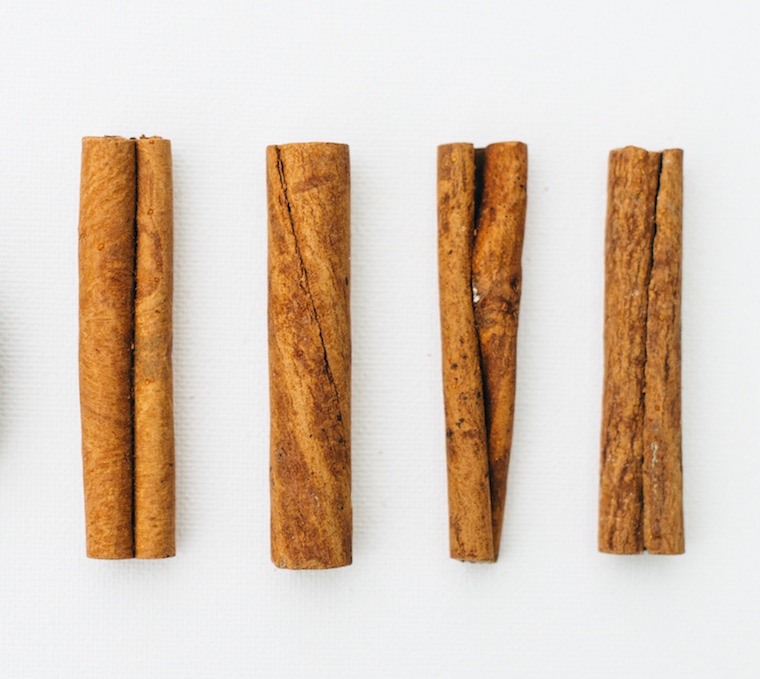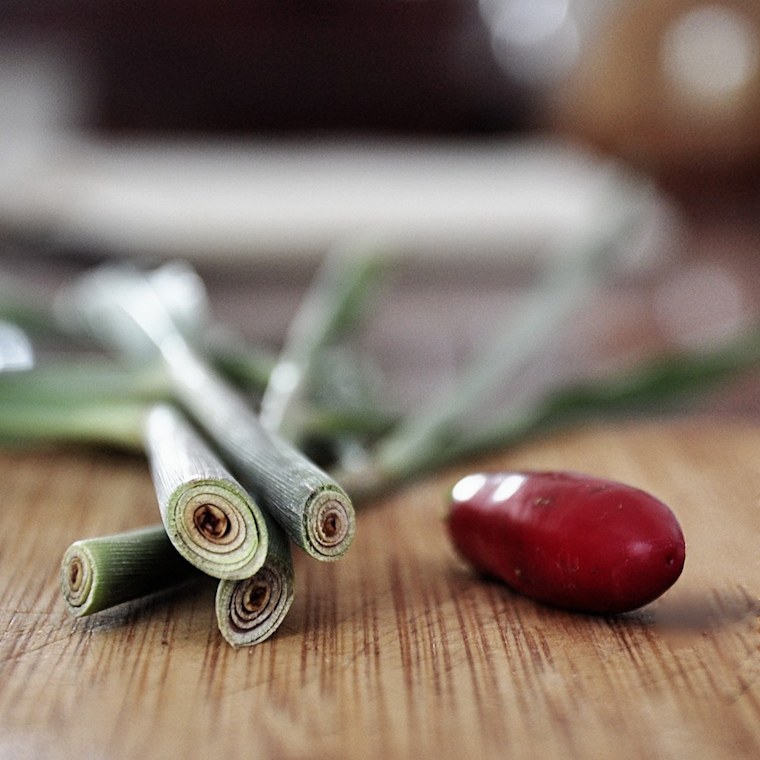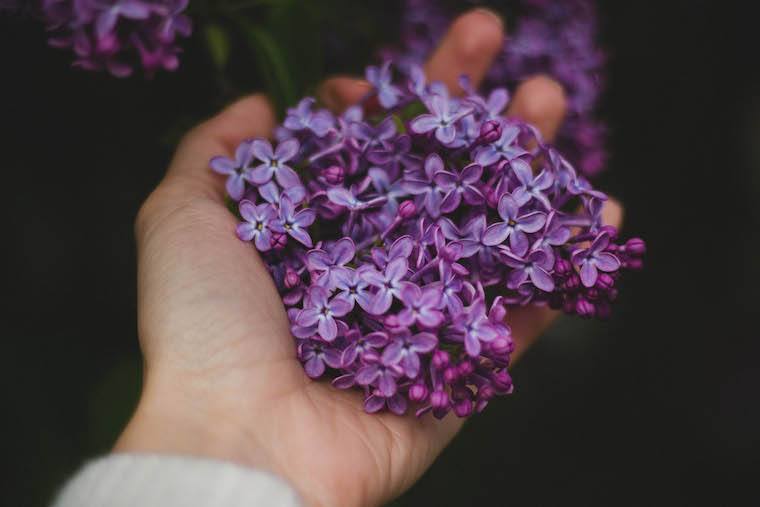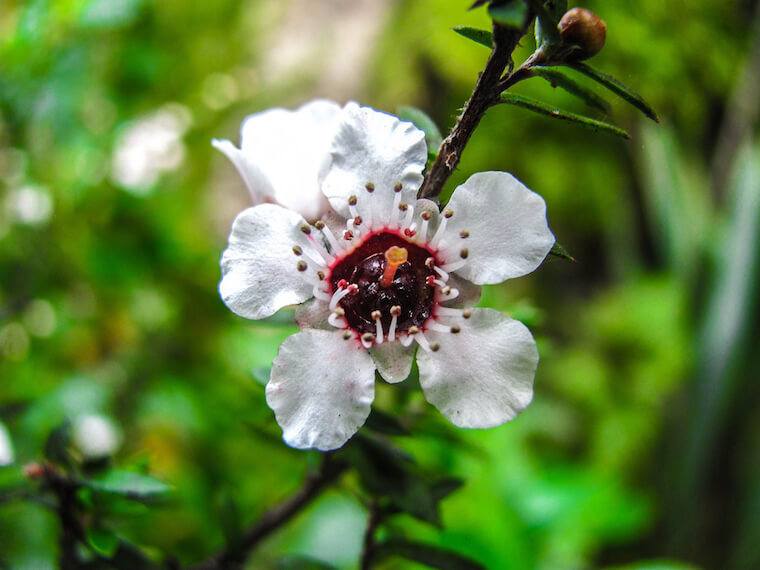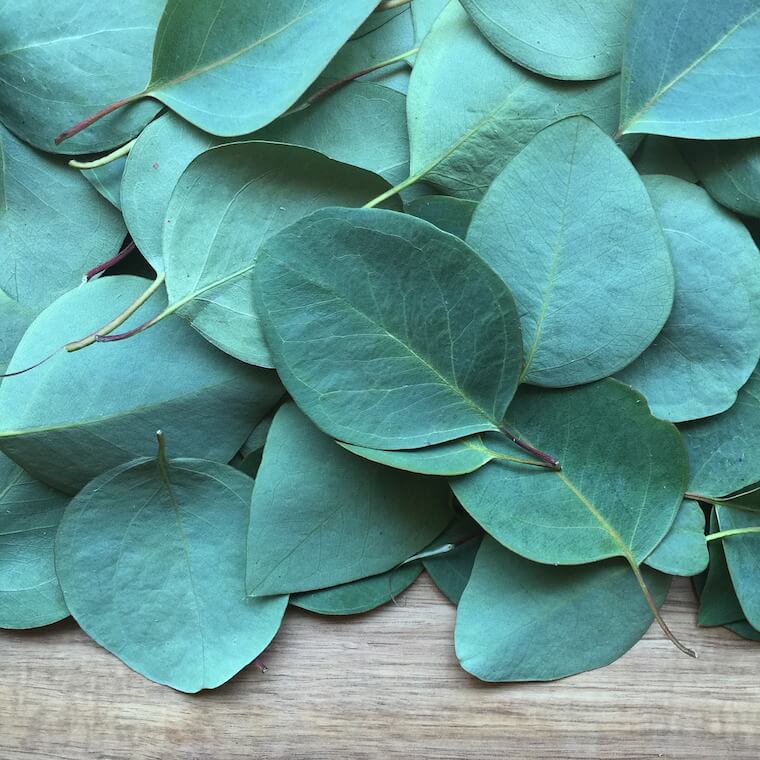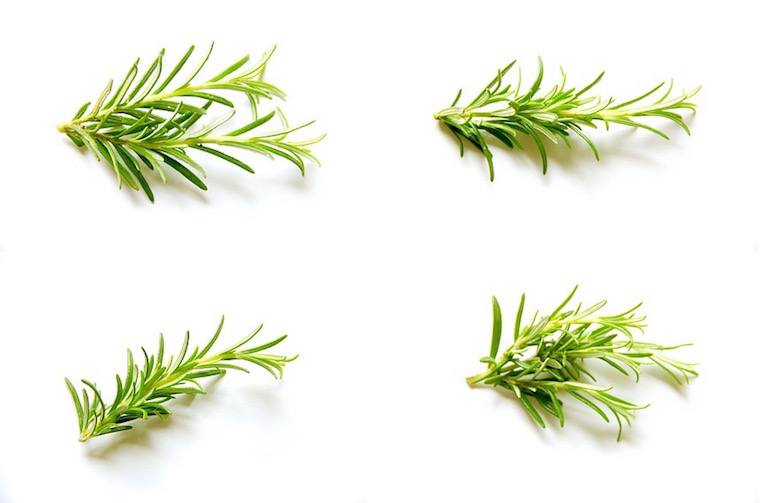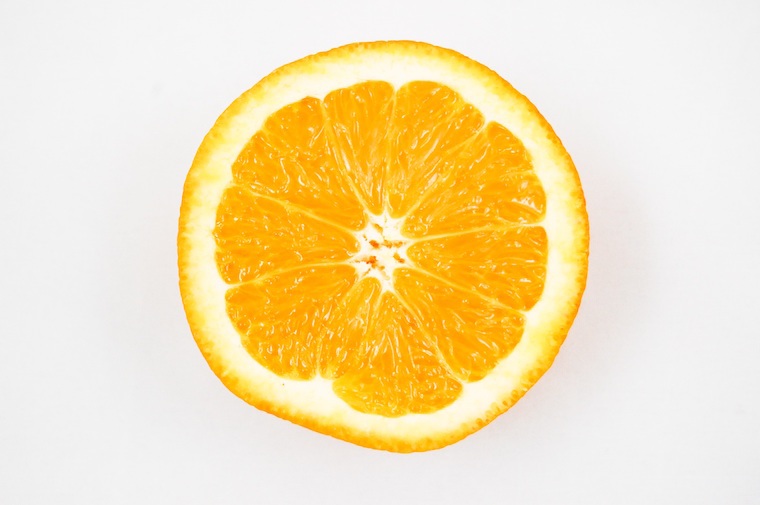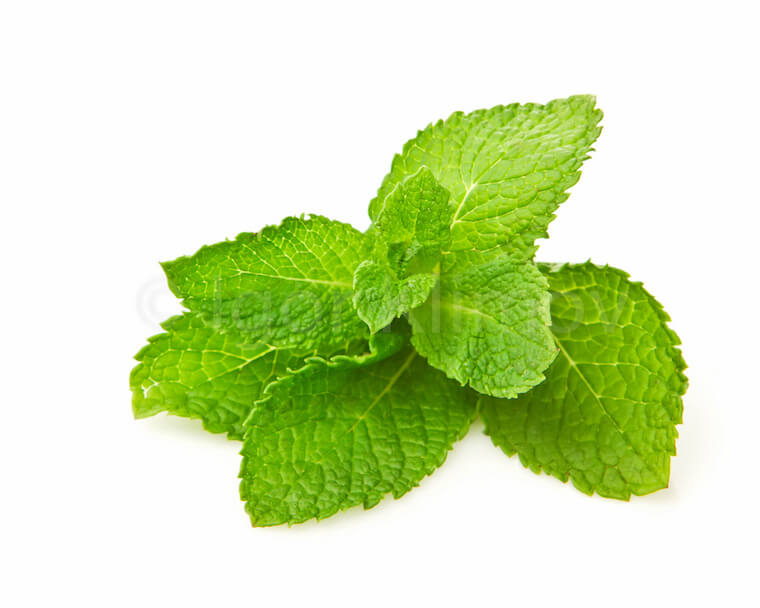Noncomedogenic is a term used to describe skin care and makeup products that are formulated in such a way that they are not likely to cause pore blockages and breakouts. Noncomedogenic is a fancy word that means not likely to cause comedones (or pore blockages).
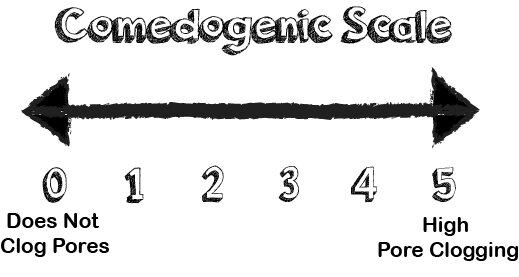
An oil that has a comedogenic rating of 0 is widely believed to be non-comedogenic and will not clog your pores.
A comedogenic rating of 1 signifies a slight chance that the oil will clog your pores.
A comedogenic rating of 2 tells you that the oil will not clog pores for MOST people, but some will begin to notice clogged pores or a “purge” in some cases.
A comedogenic rating of 3 is where a lot of people will break out using this oil, but a lot of people may not break out depending on their skin type.
A comedogenic rating of 4 suggests that MOST people will break out using this oil unless they have a good tolerance for it. This largely depends on a number of skin type factors.
A comedogenic rating of 5 is basically a guaranteed chance of breaking out. Very very few people can tolerate oils labeled as a 5, but they do exist!
Skin types can be crazy to figure out at times. I’ve recently been battling some REALLY dry skin. And I’m not talking about the usual tight dry skin, but crunchy, flaky, alligator skin with a nice sheen of oil to top it all off…and it’s been such a nuisance to deal with.
One of the most difficult times to care for your skin is when you work and go to school full time like I do. There just doesn’t seem to be enough time for “me time” and my skin tends to suffer for it as a result, especially when I’m prone to getting acne, dehydrated dry skin, or stress-induced oily skin.
So how did I manage to control the dryness and oiliness with such a busy schedule? The answer is easier than you might think.
Healing Oils for Balanced Skin – What Are The Best Oils For Your Skin Type?
It might sound counterintuitive to consider using an oil to deal with oily or dry skin, but I assure you that oils will be your new best friend, especially during the winter. Just remember – like dissolves like which means that carrier oil will cleanse and dissolve sebum. All you have to do is determine which natural oil is right for your skin type. While that may seem a bit daunting, you don’t need to worry, that’s why I’m here!
Healing oils have been used for beautiful nourished skin for thousands of years. The ancient Greeks may be best known for their use of freshly pressed olive oil to cleanse (by applying the oil to the skin and then scraping the pores) and moisturize their skin, leaving their complexions clear, supple, and glowing.
The benefits of using oil on your skin instead of moisturizers :
• Applying oil to your skin can actually trick it into thinking that it doesn’t need to produce more oil.
• Reduces clogged pores by dissolving “plugs”, blackheads, and whiteheads
• Reduces the formation of fine lines and wrinkles
• No harsh chemicals
• Doesn’t strip your skin of natural oils
• Moisturizes and soothes irritated skin
• Clears acne and balances the acid mantle
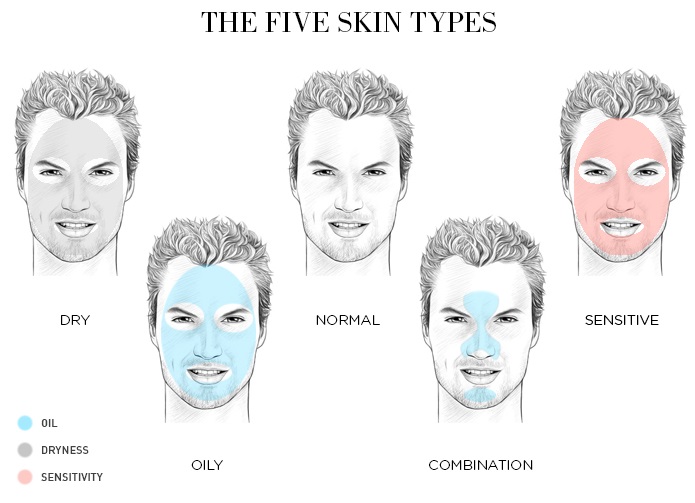
Your Skin Type and The Best Healing Oils
So let’s go over really quickly how oils are supposed to work and how to know if it’s the right oil for your skin type.
When applied to the skin, the oil should absorb completely. If it just sits on top of your skin, looks patchy, doesn’t sink in very well, or makes your face look even shinier than before, then it’s not the right oil for you.
If your skin feels “right” and looks supple, dewy, rested, not overly shiny, and the oil absorbs well, then you’re on the right track! Also, keep in mind that if your skin is dehydrated (meaning that the pores look long and stretched) then you need to be patient. Dehydrated skin will not fully allow an oil to sink in until the acid mantle has been restored.
To do this, you may need to use a bit of hyaluronic acid to help water stay trapped in your skin cells. if you take this route, make sure to spritz your skin with rose water a few times throughout the day. This will ensure that the hyaluronic acid is pulling the rose water into your skin and not moisture OUT of your skin.
Oily Skin Type
Oily skin is characterized by the overproduction of sebum which creates a greasy feel and a shiny look to the skin. People with oily skin usually have acne prone and sensitive complexions.
The best carrier oils to use for oily skin are oils that are light and contain a high amount of linoleic acid, a polyunsaturated fatty acid found in many light nourishing oils that do not clog the pores.
Linoleic acid has been proven, when applied topically, to reduce clogged pores by over 25% in just a few weeks when used daily. My personal favorite non-comedogenic oil is hemp seed oil. You can read about why here.
Oils that contain the highest amounts of linoleic acid include:
• Safflower Oil
– 74.62%
• Evening primrose oil
– 73%
• Grape Seed Oil– 69.6%
• Sunflower Oil– 65.7%
• Hemp oil– 60%
• Wheat Germ Oil– 60% (I actually no longer recommend this oil as it almost always clogs the skin)
• Apricot Kernel Oil– 50.3%
• Sesame Oil– 50%
• Rosehip Seed Oil– 45.5%
• Tamanu Oil– 38%
Be sure to keep these oils in the fridge or in a cool dark place when not in use to prevent them from going rancid (only jojoba oil will last the longest out of the fridge). You will know an oil had gone off by smelling it when you first open it compared to when smelling it when it’s become oxidized. You will definitely be able to tell the difference!
Dry Skin Type
Dry skin is characterized by tight, irritated, itchy, flaky skin. People with dry skin types are usually prone to acne due to “sticky” skin cells clogging pores.
The best oils to use for dry skin are oils that contain higher amounts of oleic acid, a monosaturated fatty acid found in heavier, more slow-drying oils. These oils are well suited for thirsty skin and are absorbed more readily than oily skin types. As a side note, if you’re using oils high in oleic acid and you find yourself breaking out, then your skin may not be considered “dry” but dehydrated. These are very different things. if this is the case, use oils high in linoleic acid instead as listed above for oily skin types.
Oleic acid is known to reduce inflammation when used topically and internally, so make sure to get good quality fats in your diet. All skin types need to be treated from inside out and the outside in.
Oils that contain the highest amounts of oleic acids are:
• Olive Oil– 55-85% depending on quality (cold pressed is best)
• Macadamia nut oil– 85%
• Avocado Oil– 75%
• Canola Oil– 57% ( I no longer recommend this oil)
• Neem oil– 54% (this oil works better as a spot treatment due to its highly anti-bacterial properties)
• Hazelnut oil– 66%
• Almond Oil– 68%
• Argan oil– 42.8
Extremely Dry Skin Type
Sometimes even oils for regular dry skin won’t work out for everyone. This is where coconut oil and plant butters come into play.
There’s been a lot of hype about whether or not coconut oil will actually make acne worse, but what I do know that it really depends. Coconut oil will moisturize even the driest skin types. If coconut oil breaks you out, it isn’t the right oil for your skin.
Shea butter, mango butter, cocoa butter, and kokum butter will give you super smooth skin due to their high amounts of palmitic acid, but watch out for possible clogged pores! I’ve used pure shea butter without any problems as it actually has, believe it or not, a comedogenic rating of 0-1! Finding the right oil for your skin type is all about experimentation. If you need a few more nifty tips for dry skin look here.
Combination Skin Type
So what about those of us with combination skin?
Not to worry! You can actually get great results without having to buy 2 different oils. I put the percent ratios up in the oil lists above so that you can choose an oil that suits you best.
Those of you with both dry and oily skin should choose oils that have a percent ratio closer to 50% such as almond oil, argan oil, apricot kernel oil, sesame oil, or rosehip oil (I have really been loving the rosehip seed oil by The Ordinary!). These oils are more balanced for combination skin types without being too far on either side of the spectrum.
I enjoy rosehip oil the most when my skin decides to change to a more combination skin type (yes, your skin can change with the seasons) and have had great results with it. All I need is 2-3 drops applied to damp skin and I’m good to go. No extra oiliness and no dryness. Using a few spritzes of homemade rose water doesn’t hurt either, in fact, I HIGHLY recommend it!
All Skin Types
Another oil I want to mention is, of course, jojoba oil. Even though jojoba oil contains fairly low amounts of oleic and linoleic acids, it is amazing for the skin because it most closely resembles our skin’s natural sebum.
Jojoba oil reduces inflammation, breaks up plugs in clogged pores (over a few weeks), and reduces the production of sebum. This oil is great for all skin types and especially beneficial for acne-prone skin. Be aware though, jojoba oil is a purging oil and will dig out impurities for some people with a vengeance. if this is the case for you, you need to be patient for a few weeks. Use very gentle exfoliants or rhassoul clay to help pull those toxins from the skin twice a week.
I recommend picking one carrier oil and trying it out for at least 2 weeks. Play around with amounts and ratios to see what oil works best for your skin type. A few drops may work for some people of a certain oil, but you may need more or less than that, so listen closely to what your skin is telling you. Pretty soon, you’ll have more balanced and comfortable feeling skin.
Also note that you can mix oils to meet your needs (jojoba oil works very well for this) and you can even add a few drops of your favorite essential oils for added benefits like:
• Tea Tree Oil– for acne-prone and dry skin (1-2 drops per tsp of carrier oil)
• – to brighten skin tone (1-2 drops per tsp of carrier – use ONLY at night)
• Rose Oil– for oily skin (use a diluted version like this one, then add 1-2 drops per tsp of carrier oil)
• – for combination skin (use 1-2 drops per tsp of carrier oil)
Where to Buy Essential Oils for 24% off.
You can even infuse herbs into your skin care oils to add healing properties such as:
• Calendula flowers– for dry irritated skin
• Arnica flowers– for healing acne eruptions and bruising
• Comfrey– Really helps reduce inflammation and heals wounds (perhaps caused by picking)
• Aloe Juice– Good for healing and softening scars

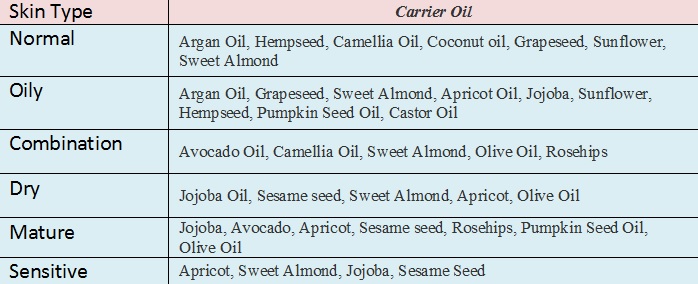
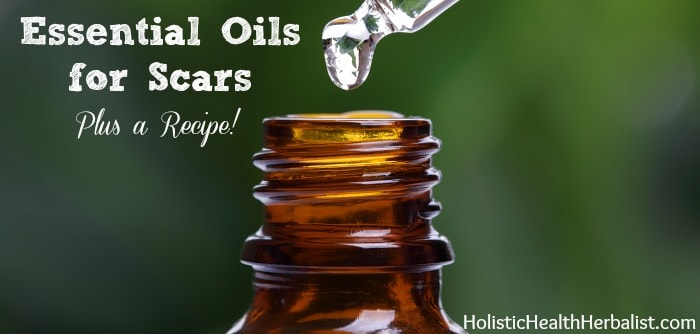
Note: add the essential oils first!
• A small roll-on bottle
• A small funnel
• Castor oil (this one or this one) until you fill one-third of the bottle
• Tamanu oil (fill the remaining 2/3 of the bottle)
• 5 drops lavender essential oil
• 5 drops helichrysum essential oil
• 5 drops carrot seed essential oil
• 5 drops elemi essential oil
• 5 drops frankincense essential oil
Loving Preparation – Scar Healing Serum Recipe
• Begin by adding each essential oil to the empty roller bottle
• Next, carefully add the tamanu and castor oil using the small funnel
• That’s it! Cap it tightly and use often!
For best results, this serum will need to be applied at LEAST twice a day. I recommend applying 3 times a day if possible. All you have to do is roll it on, rub it in, and go.
Here’s What You’re Going to Need
Aloe
Aloe is known to be one of the BEST remedies for red, irritated, and inflamed skin. It’s healing properties soothe dryness and calms swelling near areas of infection. Aloe speeds up healing and cell turnover which helps reduce scarring, making it the perfect companion for acne sufferers.
Melaleuca
The king of blemish remedies, tea tree has long been renowned for its skin healing benefits. Its high terpene content destroys bacteria when applied twice daily in diluted form. Use it to stave off acne-causing bacteria, reduce redness, and to calm inflammation.
Why Use Essential Oils for Hormonal Acne?
Essential oils offer a potent way to manage hormonal acne in a way that works amazingly well in tandem with internal treatments.
Acne is a multifactorial condition that requires an integrated therapeutic approach in order to control and finally clear it. Essential oils can really help keep blemishes at bay by killing acne causing bacteria, improving the integrity of the acid mantle, and reconditioning the skin.
Essential oils also treat hormonal acne by:
• Helping to clear out infection
• Reducing sebum production
• Minimizing scarring
• Promoting healing
• Reducing inflammation
• Eliminating toxins
• Reducing stress, depression, and negative emotions
Essential Oils for Hormonal Acne
One of the first things you want to do when healing existing acne and preventing new breakouts is choosing the right essential oils for the job as well as a suitable carrier oil to dilute them.
Choosing a carrier oil can be tricky since they largely depend on the condition of the outer-most layer of the skin. This is why some oils work some people and not work for others. The skin may be dry, dehydrated, oily, combination… some even have a mix of these conditions.
However, I find that jojoba oil is suitable for most skin types while hazelnut oil seems to work well for those with very oily skin due to its astringency. You can also match carrier oils to your skin type as well as read a whole list of comedogenic oils to see what works best for you.
Once you have chosen your carrier oil, it’s time to dive into the best essential oils for hormonal acne.
Essential Oils for Balancing Sebum
Acne Healing Serum Recipe
• 2TB carrier oil
• 1oz dropper bottle
• 20 drops Carrot Seed
• 10 drops German Chamomile
• 3 drops Myrrh
• 10 drops Palma Rosa or Geranium
• 7 drops Roman Chamomile
• 5 drops Yarrow
The essential oils in this blend reduce inflammation and discoloration, promote healing, and begin correcting and rebalancing sebum production.
To Use –
On freshly cleansed skin, apply 3-5 drops of healing serum to the face, concentrating on affected areas. Allow the serum to soak in for 5 minutes and then dab away any excess. Repeat this routine every morning for two weeks.
Healing Night Serum Recipe
• 2TB carrier oil
• 1oz dropper bottle
• 30 drops Carrot Seed
• 10 drops Rose or Palma Rosa
• 5 drops Roman Chamomile
This blend gives you a powerful punch with carrot seed essential oil that renews, rejuvenates, and restores the skin while you sleep. The healing power of rose essential oil smooths out the skin’s texture while reducing redness and fine lines. The Roman Chamomile heals existing acne, reduces hyperpigmentation, and replenishes the acid mantle.
Use for 2 weeks at night.
Essential Oils for Healing Existing Hormonal Acne
Now that your sebum is beginning to balance, it’s time to fight infection and reduce acne-causing bacteria on the skin.
Skin Balancing Toner
• 1oz spritzer bottle
• 2TB raw apple cider vinegar
• 10 drops Eucalyptus radiata
• 10 drops Lavender
Shake well before each use and spritz onto a clean cotton ball. Apply to acne prone areas morning and night after cleansing the skin.
Infection-Fighting Acne Treatment Serum
• 1oz dropper bottle
• 2 TB carrier oil
• 5 drops Thyme linalool
• 5 drops Clove
• 5 drops Eucalyptus radiata
• 8 drops Lavender
After applying the Skin Balancing Toner, gently massage a few drops of the Infection Fighting Acne Treatment Serum on affected areas. Dab off any excess after 5 minutes with a clean tissue.
This blend has amazing antibacterial properties that penetrate deep into the skin. Thyme is known to be just as effective as benzoyl peroxide as killing acne causing bacteria and drying up blemishes without the side effects. Clove essential oil is highly antibacterial and helps keep bacteria from replicating while the eucalyptus helps keep new blemishes at bay. The lavender in this blend helps calm the skin and reduce redness.
Repeat for 2 weeks.
Blemish Fighting Night Serum
• 1oz dropper bottle
• 2TB carrier oil
• 20 drops Carrot Seed
• 10 drops Eucalyptus radiata
• 10 drops Lavender
After applying the toner, gently massage the Blemish Fighting Night Serum onto affected areas. Let it sit for 5 minutes and blot away any excess with a clean tissue.
Repeat for 2 weeks at night.
Essential Oils for Repairing Skin Damaged by Acne
Now is the final step and you may be thinking “My skin looks so much better now! I don’t need to keep going with treatment!”. Well, continue you must for another 2 weeks if you want to fully restore your skin and heal up any remaining scarring and hyperpigmentation. Just because your hormonal acne has subsided doesn’t mean it can’t come back with a vengeance.
After cleansing, apply the Skin Balancing Toner. Then apply the below serums as needed.
Daytime Repair Serum
• 1oz dropper bottle
• 2TB carrier oil
• 10 drops Neroli
• 5 drops steam distilled Lemon (if you use regular lemon essential oil your skin will burn in the sun. Learn more here.)
• 5 drops Geranium
• 5 drops Elemi
Once you have applied the toner, gentle massage a few drops of the Daytime Repair serum on any areas with scarring, uneven skin tone, and hyperpigmentation. Allow the serum to soak in for 5 minutes, the blot away the excess.
Repeat daily for 2 weeks.
Nighttime Repair Serum
• 1oz dropper bottle
• 2TB carrier oil
• 10 drops Rose
• 20 drops Carrot Seed
• 4 drops Galbanum
• 8 drops Lemon
After applying the toner, gently massage a few drops of the Nightime Repair Serum all over the face, concentrating on affected areas where there is discoloration and scarring. Allow to sit for 5 minutes, then blot.
After the 6 weeks are up, continue using the Skin Balancing Toner after cleansing morning and night.
For upkeep using essential oils for hormonal acne control, use the following blend during the day:
• 1oz dropper bottle
• 2TB carrier oil
• 10 drops Tea Tree
• 10 drops Juniper (great for oily skin)
• 10 drops FCF Bergamot
For treatment at night, choose any of the above nighttime blends for the desired results.
Healing Gum Serum Recipes with Essential Oils
It is estimated that 70-90 percent of adults in the United States have some form of gum disease caused by the buildup of plaque along the gumline.
When the bacteria aren’t properly removed on a daily basis, the plaque starts to irritate and inflame the gums which can lead to pockets, gum recession, and in some cases, advanced gum disease.
Some of the symptoms of gingivitis and the progression of periodontal disease include:
Some of the main causes of gingivitis and gum disease include:
In a lot of cases, however, gum health is solely dependent on good oral hygiene, and that means flossing, brushing, and using a good rinse twice daily.
What’s been frustrating for me is I DO these things yet still struggle with keeping my gums in the threes and below range for pockets. It’s been incredibly frustrating because looking at my teeth, they are straight, white, and LOOK healthy. My gums aren’t red or inflamed.
My dental hygienist is always wondering what the heck is up because I don’t have plaque buildup or tartar or any other typical indication that my gums are having issues.
So, my only guess is I’m not absorbing nutrients very well, or I’m not eating enough nutrient dense foods to help support good gum health.
That brings us to today’s recipe which can help support the gums while getting to the root of the problem.
How to Make a Healing Gum Serum
Aside from focusing on getting in more veggies and dark leafy greens into my diet on a daily basis, I will also be using the following recipe as my daily gum serum.
I used to use one by Living Libations that I LOVED, but the bottle never lasted long enough, and it was a bit pricey to keep re-ordering it.
Instead, I’ve decided to make my own version.
Here’s what you’ll need to make my healing gum serum (fancy version):
You can read more about essential oil dilutions and conversions here.
Recipe for healing gum serum (simple version):
This version contains only the most potent essential oils for healing the gums.
If you want to get really really simple, I would recommend going with 2 drops of clove essential oil in 1 oz of fractionated coconut oil.
Loving Preparation – Healing Gum Serum Recipe

An oil that has a comedogenic rating of 0 is widely believed to be non-comedogenic and will not clog your pores.
A comedogenic rating of 1 signifies a slight chance that the oil will clog your pores.
A comedogenic rating of 2 tells you that the oil will not clog pores for MOST people, but some will begin to notice clogged pores or a “purge” in some cases.
A comedogenic rating of 3 is where a lot of people will break out using this oil, but a lot of people may not break out depending on their skin type.
A comedogenic rating of 4 suggests that MOST people will break out using this oil unless they have a good tolerance for it. This largely depends on a number of skin type factors.
A comedogenic rating of 5 is basically a guaranteed chance of breaking out. Very very few people can tolerate oils labeled as a 5, but they do exist!
Skin types can be crazy to figure out at times. I’ve recently been battling some REALLY dry skin. And I’m not talking about the usual tight dry skin, but crunchy, flaky, alligator skin with a nice sheen of oil to top it all off…and it’s been such a nuisance to deal with.
One of the most difficult times to care for your skin is when you work and go to school full time like I do. There just doesn’t seem to be enough time for “me time” and my skin tends to suffer for it as a result, especially when I’m prone to getting acne, dehydrated dry skin, or stress-induced oily skin.
So how did I manage to control the dryness and oiliness with such a busy schedule? The answer is easier than you might think.
Healing Oils for Balanced Skin – What Are The Best Oils For Your Skin Type?
It might sound counterintuitive to consider using an oil to deal with oily or dry skin, but I assure you that oils will be your new best friend, especially during the winter. Just remember – like dissolves like which means that carrier oil will cleanse and dissolve sebum. All you have to do is determine which natural oil is right for your skin type. While that may seem a bit daunting, you don’t need to worry, that’s why I’m here!
Healing oils have been used for beautiful nourished skin for thousands of years. The ancient Greeks may be best known for their use of freshly pressed olive oil to cleanse (by applying the oil to the skin and then scraping the pores) and moisturize their skin, leaving their complexions clear, supple, and glowing.
The benefits of using oil on your skin instead of moisturizers :
• Applying oil to your skin can actually trick it into thinking that it doesn’t need to produce more oil.
• Reduces clogged pores by dissolving “plugs”, blackheads, and whiteheads
• Reduces the formation of fine lines and wrinkles
• No harsh chemicals
• Doesn’t strip your skin of natural oils
• Moisturizes and soothes irritated skin
• Clears acne and balances the acid mantle

Your Skin Type and The Best Healing Oils
So let’s go over really quickly how oils are supposed to work and how to know if it’s the right oil for your skin type.
When applied to the skin, the oil should absorb completely. If it just sits on top of your skin, looks patchy, doesn’t sink in very well, or makes your face look even shinier than before, then it’s not the right oil for you.
If your skin feels “right” and looks supple, dewy, rested, not overly shiny, and the oil absorbs well, then you’re on the right track! Also, keep in mind that if your skin is dehydrated (meaning that the pores look long and stretched) then you need to be patient. Dehydrated skin will not fully allow an oil to sink in until the acid mantle has been restored.
To do this, you may need to use a bit of hyaluronic acid to help water stay trapped in your skin cells. if you take this route, make sure to spritz your skin with rose water a few times throughout the day. This will ensure that the hyaluronic acid is pulling the rose water into your skin and not moisture OUT of your skin.
Oily Skin Type
Oily skin is characterized by the overproduction of sebum which creates a greasy feel and a shiny look to the skin. People with oily skin usually have acne prone and sensitive complexions.
The best carrier oils to use for oily skin are oils that are light and contain a high amount of linoleic acid, a polyunsaturated fatty acid found in many light nourishing oils that do not clog the pores.
Linoleic acid has been proven, when applied topically, to reduce clogged pores by over 25% in just a few weeks when used daily. My personal favorite non-comedogenic oil is hemp seed oil. You can read about why here.
Oils that contain the highest amounts of linoleic acid include:
• Safflower Oil
– 74.62%
• Evening primrose oil
– 73%
• Grape Seed Oil– 69.6%
• Sunflower Oil– 65.7%
• Hemp oil– 60%
• Wheat Germ Oil– 60% (I actually no longer recommend this oil as it almost always clogs the skin)
• Apricot Kernel Oil– 50.3%
• Sesame Oil– 50%
• Rosehip Seed Oil– 45.5%
• Tamanu Oil– 38%
Be sure to keep these oils in the fridge or in a cool dark place when not in use to prevent them from going rancid (only jojoba oil will last the longest out of the fridge). You will know an oil had gone off by smelling it when you first open it compared to when smelling it when it’s become oxidized. You will definitely be able to tell the difference!
Dry Skin Type
Dry skin is characterized by tight, irritated, itchy, flaky skin. People with dry skin types are usually prone to acne due to “sticky” skin cells clogging pores.
The best oils to use for dry skin are oils that contain higher amounts of oleic acid, a monosaturated fatty acid found in heavier, more slow-drying oils. These oils are well suited for thirsty skin and are absorbed more readily than oily skin types. As a side note, if you’re using oils high in oleic acid and you find yourself breaking out, then your skin may not be considered “dry” but dehydrated. These are very different things. if this is the case, use oils high in linoleic acid instead as listed above for oily skin types.
Oleic acid is known to reduce inflammation when used topically and internally, so make sure to get good quality fats in your diet. All skin types need to be treated from inside out and the outside in.
Oils that contain the highest amounts of oleic acids are:
• Olive Oil– 55-85% depending on quality (cold pressed is best)
• Macadamia nut oil– 85%
• Avocado Oil– 75%
• Canola Oil– 57% ( I no longer recommend this oil)
• Neem oil– 54% (this oil works better as a spot treatment due to its highly anti-bacterial properties)
• Hazelnut oil– 66%
• Almond Oil– 68%
• Argan oil– 42.8
Extremely Dry Skin Type
Sometimes even oils for regular dry skin won’t work out for everyone. This is where coconut oil and plant butters come into play.
There’s been a lot of hype about whether or not coconut oil will actually make acne worse, but what I do know that it really depends. Coconut oil will moisturize even the driest skin types. If coconut oil breaks you out, it isn’t the right oil for your skin.
Shea butter, mango butter, cocoa butter, and kokum butter will give you super smooth skin due to their high amounts of palmitic acid, but watch out for possible clogged pores! I’ve used pure shea butter without any problems as it actually has, believe it or not, a comedogenic rating of 0-1! Finding the right oil for your skin type is all about experimentation. If you need a few more nifty tips for dry skin look here.
Combination Skin Type
So what about those of us with combination skin?
Not to worry! You can actually get great results without having to buy 2 different oils. I put the percent ratios up in the oil lists above so that you can choose an oil that suits you best.
Those of you with both dry and oily skin should choose oils that have a percent ratio closer to 50% such as almond oil, argan oil, apricot kernel oil, sesame oil, or rosehip oil (I have really been loving the rosehip seed oil by The Ordinary!). These oils are more balanced for combination skin types without being too far on either side of the spectrum.
I enjoy rosehip oil the most when my skin decides to change to a more combination skin type (yes, your skin can change with the seasons) and have had great results with it. All I need is 2-3 drops applied to damp skin and I’m good to go. No extra oiliness and no dryness. Using a few spritzes of homemade rose water doesn’t hurt either, in fact, I HIGHLY recommend it!
All Skin Types
Another oil I want to mention is, of course, jojoba oil. Even though jojoba oil contains fairly low amounts of oleic and linoleic acids, it is amazing for the skin because it most closely resembles our skin’s natural sebum.
Jojoba oil reduces inflammation, breaks up plugs in clogged pores (over a few weeks), and reduces the production of sebum. This oil is great for all skin types and especially beneficial for acne-prone skin. Be aware though, jojoba oil is a purging oil and will dig out impurities for some people with a vengeance. if this is the case for you, you need to be patient for a few weeks. Use very gentle exfoliants or rhassoul clay to help pull those toxins from the skin twice a week.
I recommend picking one carrier oil and trying it out for at least 2 weeks. Play around with amounts and ratios to see what oil works best for your skin type. A few drops may work for some people of a certain oil, but you may need more or less than that, so listen closely to what your skin is telling you. Pretty soon, you’ll have more balanced and comfortable feeling skin.
Also note that you can mix oils to meet your needs (jojoba oil works very well for this) and you can even add a few drops of your favorite essential oils for added benefits like:
• Tea Tree Oil– for acne-prone and dry skin (1-2 drops per tsp of carrier oil)
• – to brighten skin tone (1-2 drops per tsp of carrier – use ONLY at night)
• Rose Oil– for oily skin (use a diluted version like this one, then add 1-2 drops per tsp of carrier oil)
• – for combination skin (use 1-2 drops per tsp of carrier oil)
Where to Buy Essential Oils for 24% off.
You can even infuse herbs into your skin care oils to add healing properties such as:
• Calendula flowers– for dry irritated skin
• Arnica flowers– for healing acne eruptions and bruising
• Comfrey– Really helps reduce inflammation and heals wounds (perhaps caused by picking)
• Aloe Juice– Good for healing and softening scars


Essential Oils for Scars – Scar Healing Serum Recipe
Here’s what you’re going to need:
Here’s what you’re going to need:

Note: add the essential oils first!
• A small roll-on bottle
• A small funnel
• Castor oil (this one or this one) until you fill one-third of the bottle
• Tamanu oil (fill the remaining 2/3 of the bottle)
• 5 drops lavender essential oil
• 5 drops helichrysum essential oil
• 5 drops carrot seed essential oil
• 5 drops elemi essential oil
• 5 drops frankincense essential oil
Loving Preparation – Scar Healing Serum Recipe
• Begin by adding each essential oil to the empty roller bottle
• Next, carefully add the tamanu and castor oil using the small funnel
• That’s it! Cap it tightly and use often!
For best results, this serum will need to be applied at LEAST twice a day. I recommend applying 3 times a day if possible. All you have to do is roll it on, rub it in, and go.
Here’s What You’re Going to Need
- • The purest aloe gel you can find (fresh is best but you can use Aloe Life aloe vera gel
- • Melaleuca essential oil (aka tea tree oil)
- • A glass pump bottle or glass container for storage
- • A nut milk bag(if using fresh aloe only)
- • A small funnel
- Homemade Blemish Gel
- • If using fresh aloe, scrape the gel from the leaves and mash well with a fork.
- • Put the fresh aloe in a clean nut milk bag and squeeze through to remove any fiber. You want the mixture to be very smooth.
- • Next, add the fresh/store bought aloe gel to a glass container of choice. I love using a pump bottle for easy use.
- • Now add in 10 drops of tea tree oil for every 2oz of aloe gel.
- • Cap tightly and roll the bottle in your hands to mix thoroughly.
- To Use-
- After cleansing, pat the skin dry and apply a thin even layer of homemade blemish gel to affected areas twice a day.
- You can definitely use it more often if desired. You should see results within the first few days.
Aloe
Aloe is known to be one of the BEST remedies for red, irritated, and inflamed skin. It’s healing properties soothe dryness and calms swelling near areas of infection. Aloe speeds up healing and cell turnover which helps reduce scarring, making it the perfect companion for acne sufferers.
Melaleuca
The king of blemish remedies, tea tree has long been renowned for its skin healing benefits. Its high terpene content destroys bacteria when applied twice daily in diluted form. Use it to stave off acne-causing bacteria, reduce redness, and to calm inflammation.
Why Use Essential Oils for Hormonal Acne?
Essential oils offer a potent way to manage hormonal acne in a way that works amazingly well in tandem with internal treatments.
Acne is a multifactorial condition that requires an integrated therapeutic approach in order to control and finally clear it. Essential oils can really help keep blemishes at bay by killing acne causing bacteria, improving the integrity of the acid mantle, and reconditioning the skin.
Essential oils also treat hormonal acne by:
• Helping to clear out infection
• Reducing sebum production
• Minimizing scarring
• Promoting healing
• Reducing inflammation
• Eliminating toxins
• Reducing stress, depression, and negative emotions
Essential Oils for Hormonal Acne
One of the first things you want to do when healing existing acne and preventing new breakouts is choosing the right essential oils for the job as well as a suitable carrier oil to dilute them.
Choosing a carrier oil can be tricky since they largely depend on the condition of the outer-most layer of the skin. This is why some oils work some people and not work for others. The skin may be dry, dehydrated, oily, combination… some even have a mix of these conditions.
However, I find that jojoba oil is suitable for most skin types while hazelnut oil seems to work well for those with very oily skin due to its astringency. You can also match carrier oils to your skin type as well as read a whole list of comedogenic oils to see what works best for you.
Once you have chosen your carrier oil, it’s time to dive into the best essential oils for hormonal acne.
Essential Oils for Balancing Sebum
Acne Healing Serum Recipe
• 2TB carrier oil
• 1oz dropper bottle
• 20 drops Carrot Seed
• 10 drops German Chamomile
• 3 drops Myrrh
• 10 drops Palma Rosa or Geranium
• 7 drops Roman Chamomile
• 5 drops Yarrow
The essential oils in this blend reduce inflammation and discoloration, promote healing, and begin correcting and rebalancing sebum production.
To Use –
On freshly cleansed skin, apply 3-5 drops of healing serum to the face, concentrating on affected areas. Allow the serum to soak in for 5 minutes and then dab away any excess. Repeat this routine every morning for two weeks.
Healing Night Serum Recipe
• 2TB carrier oil
• 1oz dropper bottle
• 30 drops Carrot Seed
• 10 drops Rose or Palma Rosa
• 5 drops Roman Chamomile
This blend gives you a powerful punch with carrot seed essential oil that renews, rejuvenates, and restores the skin while you sleep. The healing power of rose essential oil smooths out the skin’s texture while reducing redness and fine lines. The Roman Chamomile heals existing acne, reduces hyperpigmentation, and replenishes the acid mantle.
Use for 2 weeks at night.
Essential Oils for Healing Existing Hormonal Acne
Now that your sebum is beginning to balance, it’s time to fight infection and reduce acne-causing bacteria on the skin.
Skin Balancing Toner
• 1oz spritzer bottle
• 2TB raw apple cider vinegar
• 10 drops Eucalyptus radiata
• 10 drops Lavender
Shake well before each use and spritz onto a clean cotton ball. Apply to acne prone areas morning and night after cleansing the skin.
Infection-Fighting Acne Treatment Serum
• 1oz dropper bottle
• 2 TB carrier oil
• 5 drops Thyme linalool
• 5 drops Clove
• 5 drops Eucalyptus radiata
• 8 drops Lavender
After applying the Skin Balancing Toner, gently massage a few drops of the Infection Fighting Acne Treatment Serum on affected areas. Dab off any excess after 5 minutes with a clean tissue.
This blend has amazing antibacterial properties that penetrate deep into the skin. Thyme is known to be just as effective as benzoyl peroxide as killing acne causing bacteria and drying up blemishes without the side effects. Clove essential oil is highly antibacterial and helps keep bacteria from replicating while the eucalyptus helps keep new blemishes at bay. The lavender in this blend helps calm the skin and reduce redness.
Repeat for 2 weeks.
Blemish Fighting Night Serum
• 1oz dropper bottle
• 2TB carrier oil
• 20 drops Carrot Seed
• 10 drops Eucalyptus radiata
• 10 drops Lavender
After applying the toner, gently massage the Blemish Fighting Night Serum onto affected areas. Let it sit for 5 minutes and blot away any excess with a clean tissue.
Repeat for 2 weeks at night.
Essential Oils for Repairing Skin Damaged by Acne
Now is the final step and you may be thinking “My skin looks so much better now! I don’t need to keep going with treatment!”. Well, continue you must for another 2 weeks if you want to fully restore your skin and heal up any remaining scarring and hyperpigmentation. Just because your hormonal acne has subsided doesn’t mean it can’t come back with a vengeance.
After cleansing, apply the Skin Balancing Toner. Then apply the below serums as needed.
Daytime Repair Serum
• 1oz dropper bottle
• 2TB carrier oil
• 10 drops Neroli
• 5 drops steam distilled Lemon (if you use regular lemon essential oil your skin will burn in the sun. Learn more here.)
• 5 drops Geranium
• 5 drops Elemi
Once you have applied the toner, gentle massage a few drops of the Daytime Repair serum on any areas with scarring, uneven skin tone, and hyperpigmentation. Allow the serum to soak in for 5 minutes, the blot away the excess.
Repeat daily for 2 weeks.
Nighttime Repair Serum
• 1oz dropper bottle
• 2TB carrier oil
• 10 drops Rose
• 20 drops Carrot Seed
• 4 drops Galbanum
• 8 drops Lemon
After applying the toner, gently massage a few drops of the Nightime Repair Serum all over the face, concentrating on affected areas where there is discoloration and scarring. Allow to sit for 5 minutes, then blot.
After the 6 weeks are up, continue using the Skin Balancing Toner after cleansing morning and night.
For upkeep using essential oils for hormonal acne control, use the following blend during the day:
• 1oz dropper bottle
• 2TB carrier oil
• 10 drops Tea Tree
• 10 drops Juniper (great for oily skin)
• 10 drops FCF Bergamot
For treatment at night, choose any of the above nighttime blends for the desired results.
Healing Gum Serum Recipes with Essential Oils
It is estimated that 70-90 percent of adults in the United States have some form of gum disease caused by the buildup of plaque along the gumline.
When the bacteria aren’t properly removed on a daily basis, the plaque starts to irritate and inflame the gums which can lead to pockets, gum recession, and in some cases, advanced gum disease.
Some of the symptoms of gingivitis and the progression of periodontal disease include:
- Mild swelling that worsens over time
- Puffy gums
- Dark red or reddish-purple gums
- Receding gums
- Bad breath that doesn’t go away
- Mouth pain
- Redness
- Bleeding gums
- Periodontal pockets – where plaque begins to form below the gum line causing the gums to recede and pockets to form
- Periodontitis – chronically present plaque, tartar, and bacterial infections that destroy gum tissue and the bone structure of teeth.
- Tooth loss
Some of the main causes of gingivitis and gum disease include:
- Being 65 or older
- Braces, dentures, and other oral appliances that make cleaning difficult
- Certain medications like birth control and heart medications
- Crooked teeth that are hard to clean
- Currently has heart disease, diabetes, or rheumatoid arthritis
- Grinding or clenching your teeth at night
- High levels of stress
- Low immunity
- Obesity
- Poor diet that lacks nutrients
- Poor oral hygiene
- Predetermined genetic risk
- Pregnancy
- Smoking or chewing tobacco
In a lot of cases, however, gum health is solely dependent on good oral hygiene, and that means flossing, brushing, and using a good rinse twice daily.
What’s been frustrating for me is I DO these things yet still struggle with keeping my gums in the threes and below range for pockets. It’s been incredibly frustrating because looking at my teeth, they are straight, white, and LOOK healthy. My gums aren’t red or inflamed.
My dental hygienist is always wondering what the heck is up because I don’t have plaque buildup or tartar or any other typical indication that my gums are having issues.
So, my only guess is I’m not absorbing nutrients very well, or I’m not eating enough nutrient dense foods to help support good gum health.
That brings us to today’s recipe which can help support the gums while getting to the root of the problem.
How to Make a Healing Gum Serum
Aside from focusing on getting in more veggies and dark leafy greens into my diet on a daily basis, I will also be using the following recipe as my daily gum serum.
I used to use one by Living Libations that I LOVED, but the bottle never lasted long enough, and it was a bit pricey to keep re-ordering it.
Instead, I’ve decided to make my own version.
Here’s what you’ll need to make my healing gum serum (fancy version):
- One 1 oz dropper bottle
- Fractionated coconut oil – anti-bacterial
- 1 drop cinnamon bark essential oil – one of the most potent antibacterials
- 1 drop clove essential oil – super high in antioxidants, reduces pain and kills bacteria
- 1 drop cypress essential oil – tightens gums and kills bacteria
- 1 drop diluted rose otto essential oil – a very astringent essential oil. Tightens gums and heals tissues
- 1 drop eucalyptus essential oil – cooling, healing, and reduces inflammation
- 1 drop German chamomile essential oil – heals wounds and reduces inflammation
- 1 drop lavender essential oil – kills bacteria
- 1 drop myrrh essential oil – one of the best oral essential oils. Supports healthy gums
- 1 drop peppermint essential oil – cooling, refreshing, and anti-inflammatory
- 1 drop spearmint essential oil – cooling, refreshing, and anti-inflammatory
- 1 drop tea tree essential oil – disinfectant and kills bacteria
- 1 drop lemon essential oil – whitens between teeth and kills bacteria
You can read more about essential oil dilutions and conversions here.
Recipe for healing gum serum (simple version):
- One 1 oz dropper bottle
- Fractionated coconut oil – anti-bacterial
- 1 drop cinnamon bark essential oil
- 1 drop myrrh essential oil
- 2 drops clove essential oil
- 8 drops peppermint essential oil
This version contains only the most potent essential oils for healing the gums.
If you want to get really really simple, I would recommend going with 2 drops of clove essential oil in 1 oz of fractionated coconut oil.
Loving Preparation – Healing Gum Serum Recipe
- Add the essential oils to the 1 oz dropper bottle
- Next, fill the bottle to the shoulder with fractionated coconut oil
- Cap closed and roll between your palms to mix


